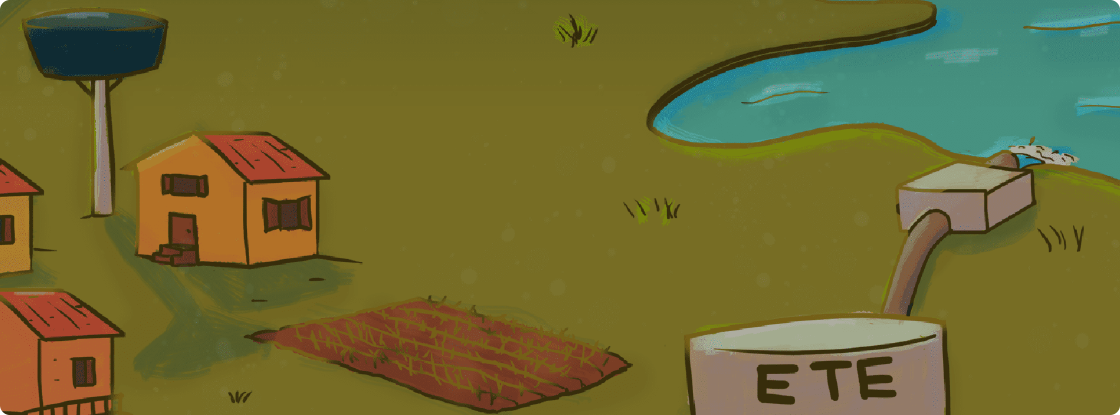
Do you have any idea of everything that happens to have running water at home? The water we use for drinking, washing, bathing and flushing goes through a long process before it reaches us. This path, the basic sanitation cycle, works not only to have access to treated water, but also to return it clean to nature.
The supply and collection of sewage are essential services for our health and life in society.
Access to basic sanitation prevents a series of diseases, in addition to being an ecological issue, since untreated sewage contaminates our rivers and seas.
The sanitation cycle starts with water treatment and ends with sewage treatment, but a lot happens in between. Knowing the process gives us a dimension of all this work and understanding it helps us to maintain a more sustainable routine. Check out the 6 steps of this procedure and learn how to save water and contribute to the preservation of our water resources!

All houses and buildings must receive treated and quality water. This water can come from rivers, springs or underground wells and makes its way to treatment plants. There, sediments and impurities are removed in the laboratory to ensure that the water is ready for our consumption.

After being treated, the water is sent to supply cities through pipes. When pipes are punctured or diverted to clandestine networks, water is wasted enormously, and consumers pay high fees.

Sewage produced by homes and businesses must be disposed of through underground piping, ensuring that no one comes into contact with the dirt to avoid illness and health problems. Open sewage can be a serious source of contamination.

Solid waste collection is also part of the sanitation cycle and is the responsibility of city halls. Garbage collection should prevent waste from reaching the waters, as slurry is one of the biggest pollutants in rivers and springs.

The drainage of rainwater is very important so that it follows its natural course, avoiding flooding. This is done by means of gutters and culverts, which must be protected by gratings to prevent solid waste from entering.

The last stage of the basic sanitation cycle is the treatment of the sewage network. The sanitation law in Brazil provides that all sewage collected in cities must receive adequate treatment before being returned to nature.
Now that you know the sanitation cycle, how about taking some actions to help this process?
At home, on the street, at school or at work, taking care of the waste we produce is also preserving our water resources. So, keep an eye on these tips to do well with the environment:
1. Dispose of garbage correctly, separating objects that can be recycled. 2. Never throw items such as tampons, diapers, cotton swabs and dental floss down the toilet. 3. Do not throw garbage on the floor. Save until you find a trash can! 4. Do not dispose of oil and other foods in the kitchen sink.